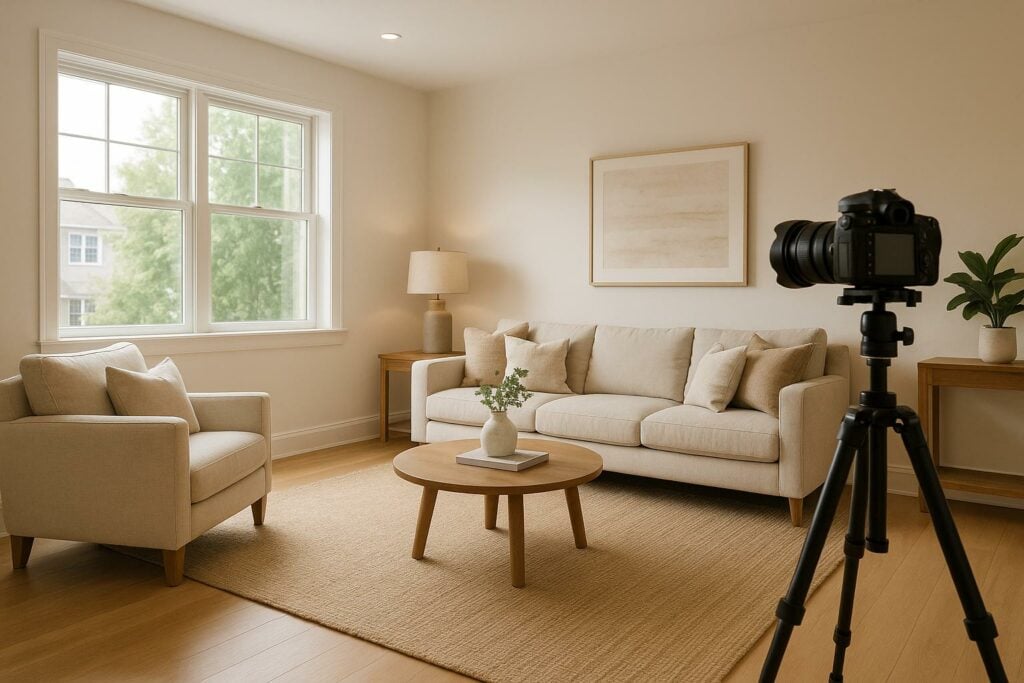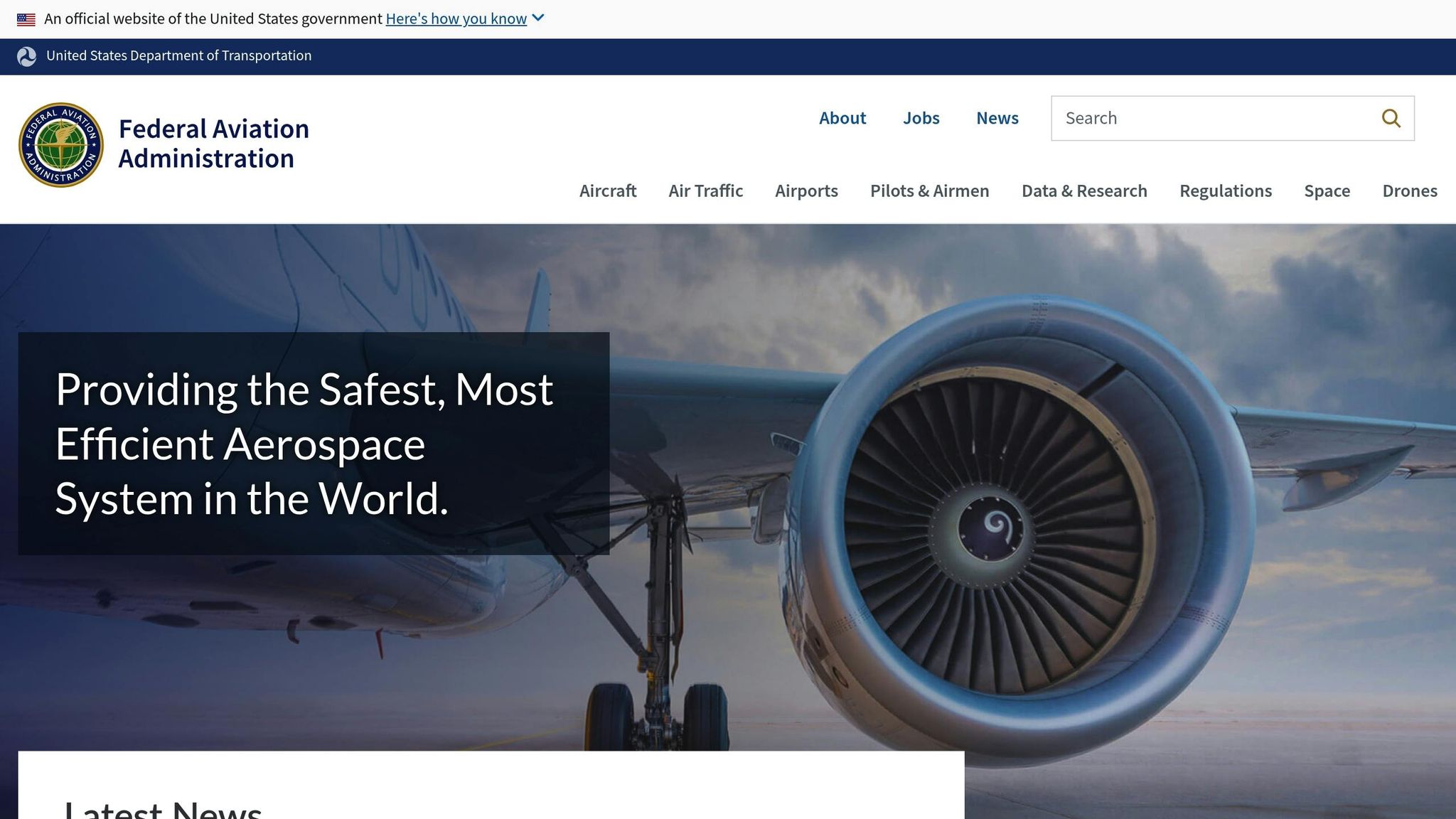- Copyright Ownership: Photographers own the photos they take, not agents. Licensing agreements are crucial for proper use.
- Property Release Agreements: Always get written permission from property owners to use images commercially.
- Model Release: If people are in photos, you need their consent for commercial use.
- Drone Privacy Rules: Follow FAA regulations and state laws to avoid invading privacy.
- Blur Sensitive Details: Remove personal info like addresses, license plates, or private items from images.
Ignoring these laws can lead to fines or lawsuits. Following them builds trust and ensures professional success.
Who Owns Your Real Estate Photos? Not You!
1. Copyright Ownership and Licensing Requirements
When it comes to real estate photography, understanding copyright and licensing rules is essential for staying compliant and avoiding legal headaches. In most cases, the photographer who takes the photos is the copyright owner – not the real estate agent or brokerage involved in the listing. This ownership gives photographers full control over how their images are used, shared, or monetized.
"A reliable rule is that the person or entity who took the photos owns the licensing rights and determines their usage." – Nicole Schnell
That said, copyright ownership can be transferred or licensed through written agreements. Typically, photographers offer licensing options that allow real estate professionals to use the photos for specific purposes while the photographer retains ownership. This setup enables agents to market properties effectively without needing to own the images outright.
There are different types of licensing to consider. Standard licensing often covers single-property listings, while extended licensing allows for long-term or broader use, such as in multiple marketing campaigns. Some photographers even offer unlimited licensing, giving agents greater flexibility to use the photos for branding and other business needs.
Without a written agreement, agents are usually granted only minimal usage rights. To avoid confusion, it’s crucial for real estate professionals to establish clear agreements with photographers before any photos are taken. These agreements should outline key details, including who owns the copyright, how long the photos can be used, any restrictions, and associated fees. Keeping organized records of these agreements is also important for avoiding disputes later on. Agents should save copies of licensing documents and make sure they clearly understand the terms.
It’s also worth noting that industry experts strongly advise against making assumptions about photo usage rights. For example, getting permission from a previous listing agent isn’t enough – only the photographer who owns the copyright can grant usage rights.
To simplify the process, companies like HomeJab provide upfront licensing terms, ensuring that real estate professionals know exactly what they can and cannot do with the photos. This kind of transparency helps prevent the confusion and "fractured" ownership issues that many experts say are common in real estate photography. Up next, we’ll dive into property release agreements and how they play a role in protecting privacy.
2. Property Release Agreements
When it comes to photographing private properties for commercial use, securing property release agreements is just as important as obtaining photo licenses. These legal documents give photographers permission to capture and use images of private properties while also protecting property owners from potential privacy issues or legal disputes.
"A property release (PR) is a legal agreement permitting you to use a piece of property in a photo or video."
While copyright agreements deal with ownership of the photos, property releases specifically allow the commercial use of images featuring private properties.
These agreements are necessary when photographing private residences, commercial spaces, or any other privately owned properties . This includes homes, villas, estates, and even model homes – essentially, any property where the owner has commercial rights. Only the property owner – whether that’s a homeowner, landlord, or management company – has the authority to sign the release.
A good property release agreement should include:
- Details of all parties involved
- A description of the property and its location
- Permitted uses of the images
- The duration of usage
- The owner’s signature
It’s also important for the agreement to specify whether alterations to the images are allowed and outline any restrictions on their use.
Here’s an example of why this matters: A photographer took photos of houses listed for sale and allowed a realtor to use them. Later, when the photographer wanted to sell those same photos on Adobe Stock, they needed a separate property release for that new commercial purpose.
"Property releases are required for images that feature private property, including homes, villas, and private estates. A property release grants the photographer and the buyer the legal right to use the image for commercial purposes."
To avoid complications, plan ahead. Reach out to property owners before the shoot, explain how the images will be used, and secure a signed release. It’s also a good idea to bring a printed copy of the release to the shoot.
If obtaining a release isn’t possible, document all relevant property information for legal review. Being proactive ensures you can use the images without restrictions and sidesteps potential legal issues.
Companies like HomeJab simplify the process by offering guidance on property releases well before the shoot. This preparation helps avoid delays and ensures all permissions are in place, so your photos are ready for commercial use without any hiccups.
3. Model Release for People in Photos
When photographing properties for real estate marketing, you might occasionally capture people in your shots – whether they’re homeowners, tenants, neighbors, or even someone passing by. A model release is a legal document where an identifiable person in a photo gives permission for their image to be used for commercial purposes.
This release is essential because it protects against claims of privacy violations or infringement on publicity rights. It also provides the flexibility to use the photo in various ways, including advertising across different media. If a person is recognizable in the image, a signed release is required before using it for any commercial purpose.
You’ll need a model release when using images for marketing materials, websites, social media posts, or any other promotional content. However, there are exceptions: you don’t need a release if the person isn’t identifiable, if the photo is for personal use (like a family album), or if it was taken in a public space where privacy isn’t typically expected.
What Should a Model Release Include?
An effective model release should cover the following:
- The specific rights granted to the photographer, including permission to use the individual’s name and image for advertising or commercial purposes.
- Details on the duration of the agreement – whether it’s for a set period or unlimited time.
- Clear guidelines on how the images can be used, whether they can be edited, and the platforms where they may appear.
Photographer Brian To from Los Angeles emphasizes keeping the language simple:
"I took the advice of a pretty famous photographer a long time ago who said to keep the model release straightforward and simple, so people you shoot are not scared of any complex hard-to-understand legal language."
For minors under 18, you’ll need parental consent.
Best Practices for Model Releases
- Always get a model release signed during any photography session where images might be used for marketing, even if you don’t have immediate plans for the photos.
- Attach shoot proofs to each signed release for clarity.
- Confirm the age of all models to ensure proper consent procedures are followed.
sbb-itb-82c5f45
4. Drone Photography and Privacy Regulations
Drone photography has reshaped real estate marketing, with studies showing that 83% of home sellers prefer agents who use aerial shots. Properties showcased with drone photography often sell faster and at higher prices. But as much as drones enhance property listings, they also bring privacy concerns to the forefront. Navigating these concerns while adhering to both federal and state laws is essential for real estate professionals.
Federal FAA Requirements
The Federal Aviation Administration (FAA) oversees all commercial drone operations under its Part 107 regulations, which include real estate photography. If you’re using a drone for business purposes, you must register it under Part 107 and obtain a remote pilot certificate.
As of September 15, 2023, all commercial drones are required to have remote identification capability. This means your drone must broadcast its identification and location during flights. To stay compliant, always carry proof of registration and your remote pilot certificate when operating a drone. Beyond these federal requirements, state and local laws add another layer of complexity, especially when it comes to privacy.
State Privacy Laws: What You Need to Know
While the FAA focuses on airspace safety, states set their own rules around privacy. Many states and municipalities have enacted laws to address concerns about drones invading personal spaces or property rights. Violating these laws could lead to misdemeanor charges or even lawsuits.
Here are some examples of state-specific drone regulations that real estate photographers need to be aware of:
| State | Specific Regulations |
|---|---|
| California | AB 856 bans drone use for invading privacy. |
| Florida | SB 766 prohibits capturing images of private property without consent. |
| Texas | HB 912 makes it illegal to capture or distribute images of individuals or property without consent. |
| Virginia | Flying within 50 feet of a dwelling without consent is a Class 1 misdemeanor. |
| Tennessee | SB 1892 classifies intentional drone surveillance as a Class C misdemeanor. |
Practical Steps for Compliance
To balance federal rules with state privacy laws, follow these practical tips:
- Get permission: Always seek consent from property owners before flying over their land, even if you’re photographing a neighboring property.
- Avoid privacy intrusions: Stay clear of flying over fences or other visual barriers that protect private spaces.
- Plan your flights: Keep flights brief and avoid hovering over homes or backyards.
- Handle accidental captures responsibly: If you inadvertently record private areas or individuals, delete those images immediately.
- Blur sensitive details: For MLS listings, blur out identifying features like license plates or house numbers from neighboring properties.
Additionally, be considerate of noise by avoiding early morning or late evening flights. Limit the number of flights over residential areas to reduce disruptions. Use apps or maps to check for temporary flight restrictions and no-fly zones near sensitive areas like airports or military bases.
Given the complexity of managing both federal and state regulations, many real estate professionals turn to services like HomeJab. These companies employ vetted drone operators who handle all compliance requirements while delivering high-quality aerial photography. This ensures that cutting-edge techniques are used without compromising legal or ethical standards.
5. Blurred or Redacted Content Requirements
When working with real estate photography, privacy and compliance with regulations are key. Images must be carefully edited to obscure any personal or sensitive details. This is especially important for protecting property owners and ensuring that listings or marketing materials meet legal privacy standards. Adhering to these guidelines helps prevent security risks and aligns with rules surrounding property, models, and drone content.
Property and Owner Information
Photographers should take steps to safeguard details about the property and its owners. This includes redacting visible property addresses, owner names, and any contact information, such as phone numbers or email addresses that might appear on documents, mail, or signage. This reduces the risk of privacy violations.
Financial and Personal Identifiers
Extra care is needed when dealing with financial and personal details. Key information that must be redacted includes bank account numbers, credit card details, Social Security numbers, driver’s license numbers, state IDs, passport information, signatures, security codes, PINs, passwords, birth dates, and wire transfer instructions. In private or off-market deals, even sale prices or specific financial terms may require redaction to maintain confidentiality.
Personal Items and Identifiable Features
Photographers should also pay attention to personal belongings within a property. Items like family photos, children’s artwork, personal memorabilia, and visible license plates (either on vehicles or through windows) should be obscured to protect the privacy of the residents.
Modern Tools for Efficient Redaction
AI-powered tools can make the redaction process faster and more efficient. These systems use advanced algorithms to automatically detect and blur sensitive elements in photos. For professionals managing high volumes of images, cloud-based services provide secure and scalable solutions for processing while safeguarding data. These tools work alongside established privacy practices to ensure accuracy and efficiency.
Best Practices for Content Modification
To maintain privacy standards, photographers should choose angles that avoid capturing neighboring properties or unrelated subjects. Any requests to modify or remove images for privacy concerns should be handled promptly and respectfully. Consistent and careful redaction practices not only protect privacy but also maintain the professionalism of the final product.
Companies like HomeJab ensure that photographers meet these privacy standards. Their trained professionals incorporate redaction as part of their routine workflow, delivering high-quality property images that respect privacy while supporting effective marketing efforts.
Conclusion
Adhering to privacy laws in real estate photography is more than just a legal requirement – it’s a way to build trust and demonstrate professionalism. Ignoring these laws can lead to serious consequences, such as fines, lawsuits, or even losing your license. On the flip side, following them doesn’t just keep you out of trouble – it also strengthens your reputation in the market.
Respect for privacy goes a long way in fostering client loyalty and generating referrals. When clients see that you take protecting their personal information seriously, they’re more likely to recommend your services. In an industry that thrives on relationships, this kind of integrity can give you a real edge over the competition.
To ensure compliance, always get written consent from property owners, avoid taking unauthorized images, follow local drone regulations, and maintain detailed records . Keeping transaction records and staying on top of compliance reporting requirements are also key. Regularly training your team on these practices helps make privacy protection an automatic part of your workflow.
Incorporating privacy standards into your photography approach not only keeps you compliant but also boosts the quality of your services. For example, HomeJab’s photographers are trained to follow strict privacy protocols. They carefully plan their shots to avoid capturing personal items and use techniques to obscure or remove sensitive details. This ensures that property images highlight the home’s best features while respecting the owner’s privacy.
As privacy regulations in real estate continue to evolve, staying ahead of the curve is essential. By adopting strong privacy practices now and working with professionals who understand these requirements, you’re setting yourself up for long-term success while safeguarding the interests of your clients and stakeholders.
FAQs
What’s the difference between standard and extended licenses for real estate photography?
When it comes to using real estate photos, a standard license usually covers the basics. It’s perfect for tasks like marketing a single property during its listing period. Think MLS listings or sharing on social media – this license handles those common needs.
An extended license offers more freedom. It allows for broader usage, such as reusing the photos for multiple properties, running longer marketing campaigns, or using the images across different platforms with fewer limitations. This option is great for agents or brokers who need flexibility in how they utilize their media.
What steps should real estate photographers take to comply with drone privacy laws in the U.S.?
To operate drones legally for real estate photography in the U.S., you’ll need a Remote Pilot Certificate from the FAA. Along with this certification, it’s crucial to adhere to FAA rules, such as keeping your drone under 400 feet and steering clear of restricted airspace. Respecting privacy is equally important – never fly over private property without permission, and avoid behaviors like harassment or intrusive surveillance.
Beyond federal regulations, take the time to understand any state or local laws that may apply. Some areas might require extra permits or enforce specific restrictions on drone use. Staying up-to-date on these rules not only keeps you compliant but also reinforces your professionalism.
What should real estate photographers do if their photos accidentally include personal or sensitive information?
If personal or sensitive information ends up in real estate photos by mistake, it’s crucial to act quickly to safeguard privacy. Start by blurring or editing any visible sensitive details before the images are used. Make sure all files are stored securely, ideally with encrypted systems, and promptly delete any outdated or unnecessary photos. If the photos have already been shared, collaborate with the real estate agent to ensure the sensitive details are either removed or obscured. These actions not only protect privacy but also demonstrate professionalism and adherence to privacy laws.












